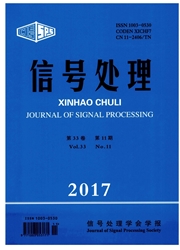

 中文摘要:
中文摘要:
特征提取作为模式识别中的重要步骤,一直是图像处理研究的重点,逐渐兴起的深度学习理论,作为一种新的深层特征提取模型,越来越受到广大学者的关注。本文提出一种基于深层融合度量学习的稀疏特征提取算法,在深度学习的框架内,构建度量映射矩阵,对图像进行分层映射,最大化保留样本集类间区分信息,并且通过稀疏迭代来保证特征提取结果的稀疏性。首先构建图像集距离度量函数,然后通过求解最大化类间距离来确定最优度量映射矩阵,同时对特征映射结果进行L1范数稀疏迭代,提高噪声鲁棒性。然后对这个基本特征提取单元进行深度化改造,在第二层中进行同样操作,最终通过多层融合提取得到分层深度稀疏特征。相对于已有子空间方法,本文在特征映射过程中引入度量自学习机制,并着重对各个特征映射层进行视觉合理性稀疏约束,融合多层特征语义描述生成最终特征提取结果。在FERET、AR、Yale等经典人脸数据库以及MNIST、CIFAR-10等目标数据库上的实验结果表明,该算法可以取得较高的识别率以及较好的光照、表情、人脸朝向鲁棒性,并且相对于卷积神经网络等深度学习框架具有结构简洁、收敛速度快等优点。
 英文摘要:
英文摘要:
Feature extraction is always the key point in image processing as an important step in pattern recognition. Recently, the theory of deep learning has drawn more and more attention from scholars as a new deep feature extraction model. In this paper, a new algorithm of sparse feature extraction will be proposed based on multi-layered deep metric subspace learning. This algorithm can hierarchically map images through metric matrix. It also can maximize inter-class variations. After the mapping, this algorithm guarantees the sparsity of extracted result by the sparse iteration. First of all, it is necessary to build the function for image distance measurement. After that, the optimal metric matrix should be calculated by maximizing inter-class variations. At the same time, feature mapping results should be iterated through L1 Norm Sparse to in prove the noise robustness. Then, the unit of basic characteristics will be reformed according to the principle of deep subspaee. In the second layer, the same operations will happen as well. In the end, sparse feature extraction model will be accomplished based on multi-layered deep metric subspace learning. Comparing with the existing subspace model, this paper introduces the mechanism of metric self-learning in the process of feature mapping. Meanwhile, every feature layer will be added visually pleasing sparse constraint to generate the result of feature extracted. The experimental results on face database of FERET, AR, Yale and target database of MNIST, CIFAR-10 show that this feature extraction model can achieve high recognition rate, robustness for illumination, expression and pose. Additionally, the introduced algorithm has more clear structure and faster convergent rate than deep learning theory of convolutional neural networks or the others.
 同期刊论文项目
同期刊论文项目
 同项目期刊论文
同项目期刊论文
 期刊信息
期刊信息
